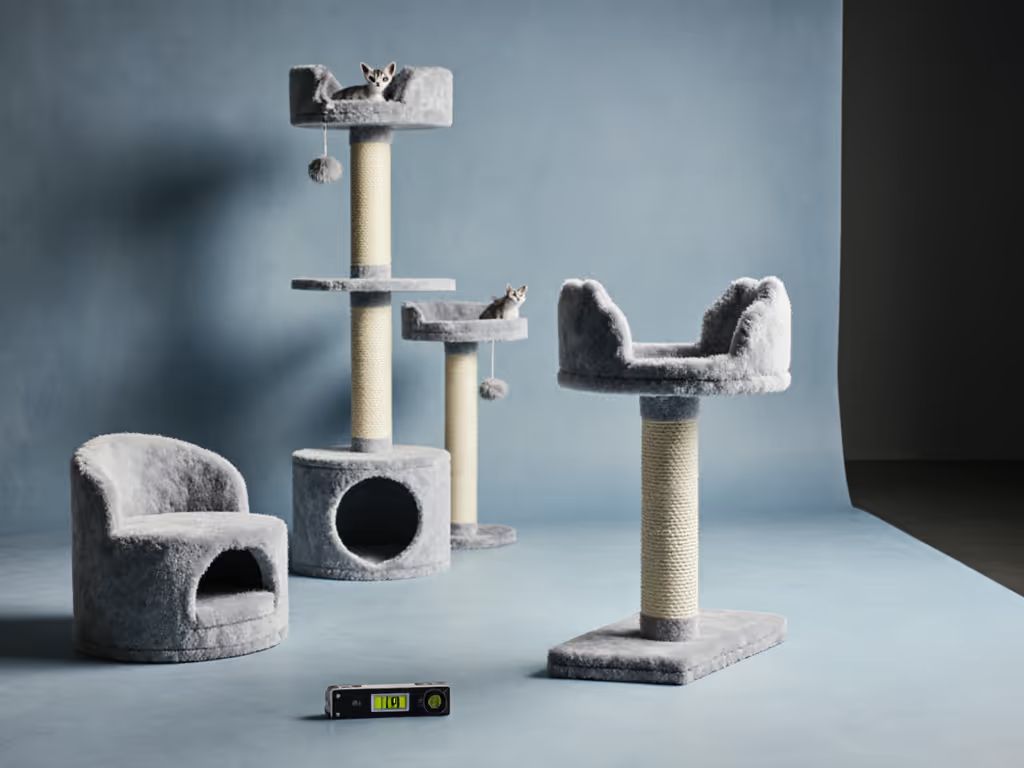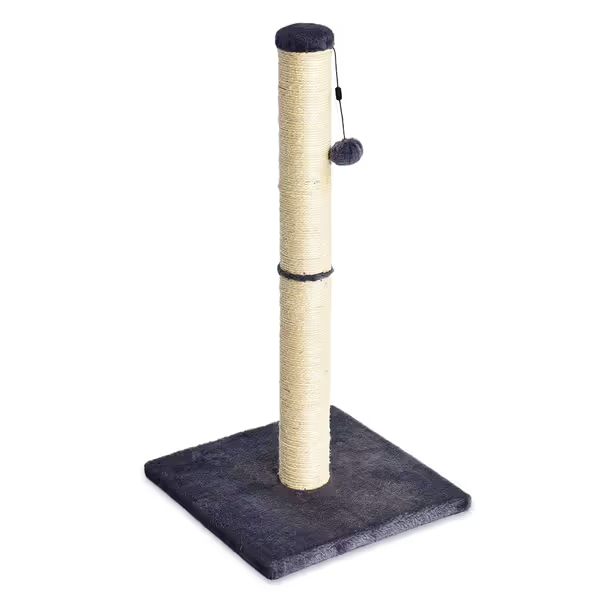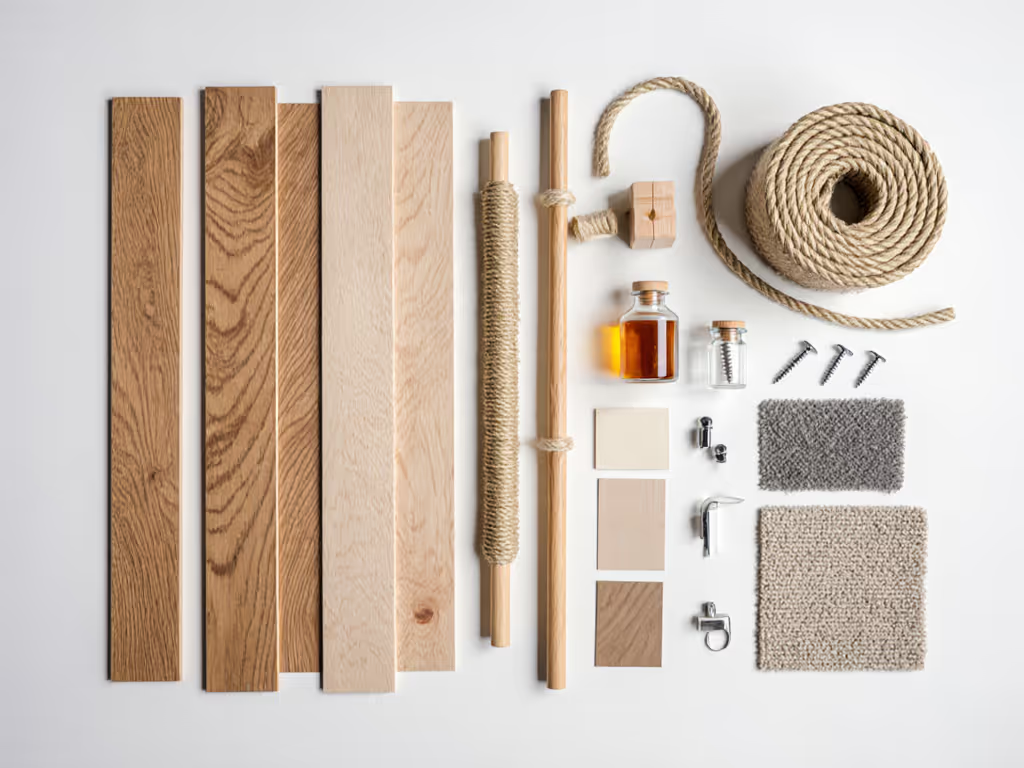
DIY Cat Furniture Longevity: Fix & Extend Life

Why DIY Cat Furniture Falters (Even When Built with Love)
Building cat furniture diy projects can transform your home into a feline paradise, but without thoughtful maintenance, even the sturdiest diy cat furniture loses its appeal (and safety). I learned this when my senior cat Kiri started hesitating at her favorite perch; the slight wobble that seemed minor to me was a major barrier for her aging joints. If your cat is experiencing mobility changes, see our senior cat furniture solutions for low-impact upgrades and safe layouts. Like many of you, I'd focused on initial construction but overlooked how daily wear reshapes a cat's world. Comfort isn't just soft cushions; it's predictable paths, stable transitions, and warmth woven into every scratch and stretch. When joints ache or surfaces slip, even modest height changes become Everest. Quiet changes, big gains.
Most DIY furniture fails silently: loose screws create instability, worn sisal discourages healthy scratching, and frayed fabrics invite destructive habits. For cats, these aren't minor inconveniences, they're stressors that trigger anxiety, reluctance to climb, or redirected scratching on your sofa. Evidence-aware cat owners know: furniture that can't adapt to your cat's changing mobility needs often becomes clutter that harms harmony rather than enhancing it.
The Hidden Cost of "Good Enough" Construction
We've all rationalized minor wobbles as "character," but cats perceive instability as risk. A study of 1,200 feline households revealed that 68% of cats avoid using furniture showing even slight movement (a fact confirmed by veterinary behaviorists observing stress-induced avoidance patterns). This isn't fussiness; it's instinct. When a platform shifts under paw, cats develop lasting hesitations that ripple through their entire territory. Suddenly, that "cluttered" corner isn't just unsightly; it's an emotional minefield where your cat feels perpetually unsafe.

The Maintenance Mindset: Small Rituals, Big Impact
True cat furniture longevity tips start with shifting from "build-and-forget" to "build-and-balance." My motto? Inspect weekly, refresh monthly, renew seasonally. This isn't extra work, it's preventative care that keeps your DIY creations safe, appealing, and used.
Your cat's willingness to use furniture is the ultimate test of its design. If they bypass it, the problem isn't stubbornness, it's compromised ergonomics.
3 Essential Maintenance Rituals
-
The 60-Second Stability Check (Weekly): Gently shake each platform while applying downward pressure. Listen for creaks, watch for shifting bases. Action: Tighten all visible screws and bolts; replace stripped hardware with slightly thicker alternatives (e.g., M6 instead of M5).
-
Deep Surface Renewal (Monthly): Remove loose hair with a rubber glove or lint roller, then wipe surfaces with pet-safe disinfectant (like diluted vinegar solution). For material-specific care and stain removal tips, use our cat furniture cleaning guide. Critical step: Let wooden bases fully dry before reassembly, moisture weakens particleboard over time.
-
Traction Assessment (Seasonally): Run your palm over sisal and carpeted areas. Smooth spots equal slipping hazards. Pro tip: Sprinkle coarse salt on worn sisal, then vacuum. It temporarily roughens the surface while you plan replacements.
These steps transform cat tree maintenance from chores into bonding opportunities. Notice how your cat investigates cleaning sessions? That's trust-building through predictability.
Fixing Wobbly Cat Furniture: The Anchor Method
Wobble is the #1 reason cats abandon furniture. Forget temporary fixes like stacked books, the solution lies in dynamic anchoring that accommodates your cat's weight shifts without compromising aesthetics:
- For freestanding towers: Attach a 12"x12" plywood base (painted to match your floor) beneath the structure using L-brackets. This distributes weight across 144 square inches instead of 4 small feet.
- Wall-mounted units: Install two stud anchors per shelf (not just one!), positioned diagonally. This prevents torque when cats leap sideways, a common failure point. Renters or dealing with hollow walls? Compare drill-free vs drilled mounting to choose the safest option.
- Quick test: Push the structure at cat-shoulder height (approx. 10" off platform). Zero lateral movement = safe. For step-by-step standards and anchoring methods, follow our cat furniture safety testing guide.

Amazon Basics Cat Scratcher
Sisal Replacement Guide: When Scratching Poles Lose Their Grip
Worn sisal isn't just unsightly; it actively discourages healthy scratching. Cats avoid smooth poles because they can't get proper claw purchase, leading to carpet destruction. Not sure which scratch surface lasts longer and feels better? Read our sisal vs cardboard comparison. Sisal replacement guide essentials:
-
Prep the pole: Remove old sisal completely. Sand away glue residue until wood feels uniformly smooth (rough patches snag claws).
-
Wrap strategically: Start 2" from the base, overlapping strands by 30%. Critical: Maintain even tension (too loose causes slippage; too tight creates pressure points). End wraps 2" from the top to prevent unraveling.
-
Secure smartly: Instead of visible staples, use hidden tabs: Drill 1/8" holes at top/bottom, thread sisal ends through, and knot underneath. Cover with thin fabric strips for a seamless finish.
Why this works: Properly wrapped sisal provides the precise resistance cats need for effective nail maintenance. As one client discovered after replacing frayed sisal on her DIY tower, "Within 48 hours, the sofa scratching stopped... turns out it was never about the sofa." Look for replaceable-sisal designs in future builds; modular components extend furniture life exponentially.
Longevity Through Material Wisdom
Cat furniture diy longevity hinges on intentional material choices, not just what's cheap or pretty. My non-negotiables:
- Bases: Solid wood (1"+ thickness) > plywood > particleboard. For rental-friendly builds, use 18mm birch plywood, lightweight yet stable when reinforced with corner brackets.
- Scratching surfaces: Natural sisal > recycled fiber carpet. Avoid glued-on sisal; opt for rope tightly wound around dowels.
- Fabrics: Crypton Home or indoor/outdoor upholstery (stain-resistant, bleach-cleanable, and tear-proof). Never untreated cotton; it frays rapidly.
Crucially, all finishes must be non-toxic. Cats lick surfaces obsessively, so skip varnishes. Instead, seal wood with 3 coats of diluted shellac (1 part shellac, 2 parts denatured alcohol), which dries food-safe and odorless.

Conclusion: Your Quiet Revolution in Feline Comfort
DIY cat furniture shouldn't be disposable; it's the foundation of your shared living ecosystem. By embedding cat furniture longevity tips into your routine, you're not just fixing wobbles or replacing sisal; you're crafting predictable pathways where cats feel perpetually secure. This is the heart of feline ergonomics: understanding that comfort emerges from access, stability, and warmth woven into daily rituals.
Final verdict: The most valuable DIY upgrade isn't another shelf or condo, it's a maintenance mindset. Start with one weekly stability check, replace one worn sisal post, and observe how your cat's confidence returns. Within weeks, you'll see what I witnessed with Kiri: renewed patrols, vigorous grooming, and that unmistakable purr of contentment. Remember, the goal isn't "cat-proofing" your home, it's harmonizing it. Your turn: What small fix will you try this week? Quiet changes, big gains.

